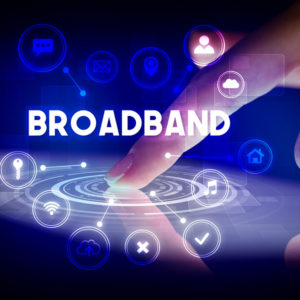As part of its requirements for access to taxpayer funds from the Broadband Equity, Access and Deployment program, the National Telecommunications and Information Administration wants states to submit a plan showing their efforts to promote middle-class affordability. An industry trade group said in a recent report that broadband is already generally affordable for that economic class.
Rick Cimerman, vice president of external and state affairs at NCTA — The Internet and Television Association, noted in a recent webinar that price is not preventing widespread adoption of broadband by the middle class. Based on 2020 statistics from the Bureau of Labor, NCTA defined the middle class as those earning between $45,300 and $76,200.
Going further, Cimerman used the Federal Communications Commission’s Lifeline modernization effort in 2016 to set the threshold for affordability at 2 percent of monthly household income.
By that standard, broadband is quite affordable for the middle class, according to Cimerman. The analysis found that the middle class spends an average of $69 monthly for broadband. That number represents just 1.1 percent of annual income for those at the top of Cimerman’s range and 1.8 percent for those at the bottom.
Consumers can thank dropping broadband prices for this affordability when the cost of just about everything else keeps rising.
A report by US Telecom released earlier this year found that the cost of the most popular broadband services in the study dropped by nearly 14.7 percent from 2021 to 2022. In addition, the costs for plans with the fastest speeds also dropped 11.6 percent from 2021 to 2022. These cost decreases came as the overall costs of goods and services increased by 8 percent in the past year.
Cimerman said during the webinar that the drop over the past several years is even more precipitous — 39 percent for the highest-speed plans between 2015 and 2021 and 26 percent for the most popular plans.
In preparation for the Broadband Equity, Access and Deployment funding requirements, some states are seeking help from their citizens. For example, the Broadband Access Study Commission in New jersey created an online survey for residents to answer questions about broadband speed, usage and cost.
New Jersey Board of Public Utilities President Joe Fiordaliso said that the survey “will identify barriers to broadband service such as physical access, deployment and affordability, and I ask residents from all areas of the state to take the survey to inform our work.”
Witnesses at a hearing of the Senate Subcommittee on Communications, Media and Broadband on December 13 to discuss best practices for the billions in taxpayer money being distributed to grow broadband infrastructure said governments cutting red tape will help keep high-speed internet affordable and speed up its growth.
For example, US Telecom CEO Jonathan Spalter suggested the subcommittee should pass legislation to create 60-day “shot clocks” for federal agencies to approve or deny project applications.
“Federal agencies (sit) on permits for years with no action,” he said. “Much can be done by policymakers at all levels of government to eliminate barriers that deny or delay affordable, reliable high-speed connectivity for all.”
The recent reports about consumer broadband costs are encouraging. It is hoped that federal, state and local governments will work to reduce regulatory barriers so that broadband can continue to grow rapidly and at an affordable rate.

